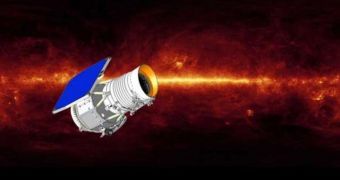In their own time, ninjas were perfect at hiding themselves in the shadows, and at navigating the darkness flawlessly, away from any light. However, in modern time, they would be easily discovered by a soldier wearing infrared goggles, as ScienceDaily accurately points out. In an attempt to translate this reasoning to the vastness of space, experts are currently building the most sensitive detector to date, which will have the ability to hunt elusive sky “ninjas” that hide in the dark and cold places between galaxies. The new instrument is called the Wide-field Infrared Survey Explorer (WISE), ScienceDaily reports.
The new, wide-angle, orbit-based telescope will be able to detect even the dimmest traces of light or infrared-wavelength radiation coming in from the spaces between stars and galaxies. For a while, astronomers believed that these recesses of the skies were empty, but recent discoveries in the field taught them better than that. Vast dust clouds, brown dwarf stars, and large asteroids could all be lurking in these spaces. Experts say that large-scale asteroids heading for our planet could exist there as well, and thus the need for instruments to investigate these cosmic “dark spots” arises.
“When you look at the sky with new sensitivity and a new wavelength band, like WISE is going to do, you're going to find new things that you didn't know were out there,” University of California in Los Angeles physicist Edward Wright, who is also the principal investigator for the WISE mission, says. “If there's a significant population of asteroids nearby that are very dark, they will have been missed by these previous surveys,” he adds. According to the mission's objective, the new observatory is expected to photograph about 200,000 asteroids during its all-sky survey.
In order to be able to detect very cold objects lurking in the Universe, WISE will have to be cooled to a lower temperature than that they have. As such, plans are for it to operate at about minus 258 degrees Celsius, or minus 433 degrees Fahrenheit, only 15 degrees above absolute zero (0 Kelvin). Solid hydrogen was chosen as the main cooling material, over liquid nitrogen, which is generally used for this kind of missions. “The cooling power is much higher for hydrogen than for helium,” Wright says of the choice.

 14 DAY TRIAL //
14 DAY TRIAL //